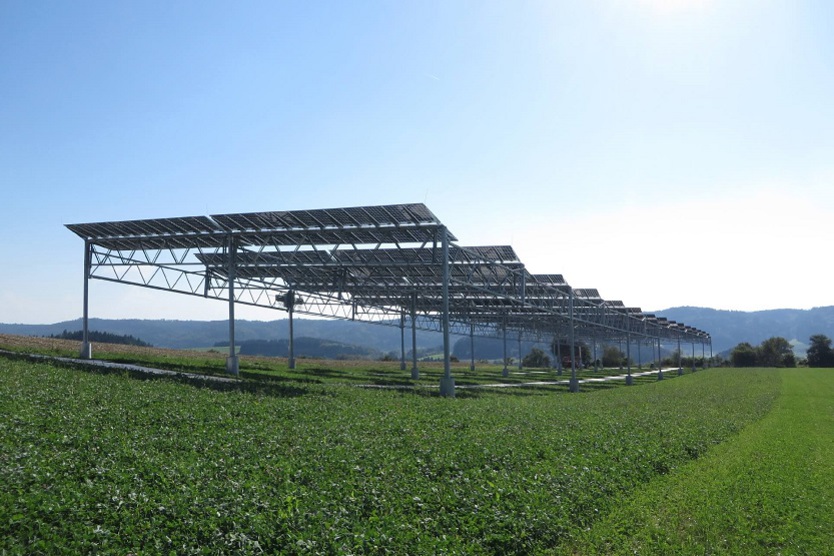
For some time the land used for crops has been shared with rows of photovoltaic systems, but a new approach called agri-PV combines solar collection with weather protection.
© Fraunhofer ISE
Climate change is already having an effect on agricultural yields in Europe, so how can the farming industry adapt to become more resilient and energy-efficient? Fruit growing is a good example: For some time the land used for fruit trees has been shared with rows of photovoltaic systems, but a new approach called agrivoltaics or agri-PV combines solar collection with weather protection.
Due to rising temperatures and more extreme weather events, orchard farmers are already having to protect their crop from strong solar radiation, rising temperatures and heavy rainfall or hail. Hail protection nets and foils are increasingly used to counteract quality and yield losses.
In the “APV-Obstbau” project, scientists from the Fraunhofer Institute for Solar Energy Systems (ISE) will investigate to what extent novel agri-PV systems can take over the protection function as well as generating power for applications such as electric agricultural machinery and cold storage rooms.
A pilot facility will be built to test different agrivoltaic system designs, with special attention to light management, system design, landscape aesthetics, economic efficiency, social compatibility and plant cultivation parameters. Four variants will be assayed to see which is the most efficient and environmentally acceptable: control variant with state-of-the-art hail protection nets, agrivoltaic plant, agrivoltaic plant with reduced pesticide use and foil roofing.


